Yesterday, we posted this 1937 graphic mystery.
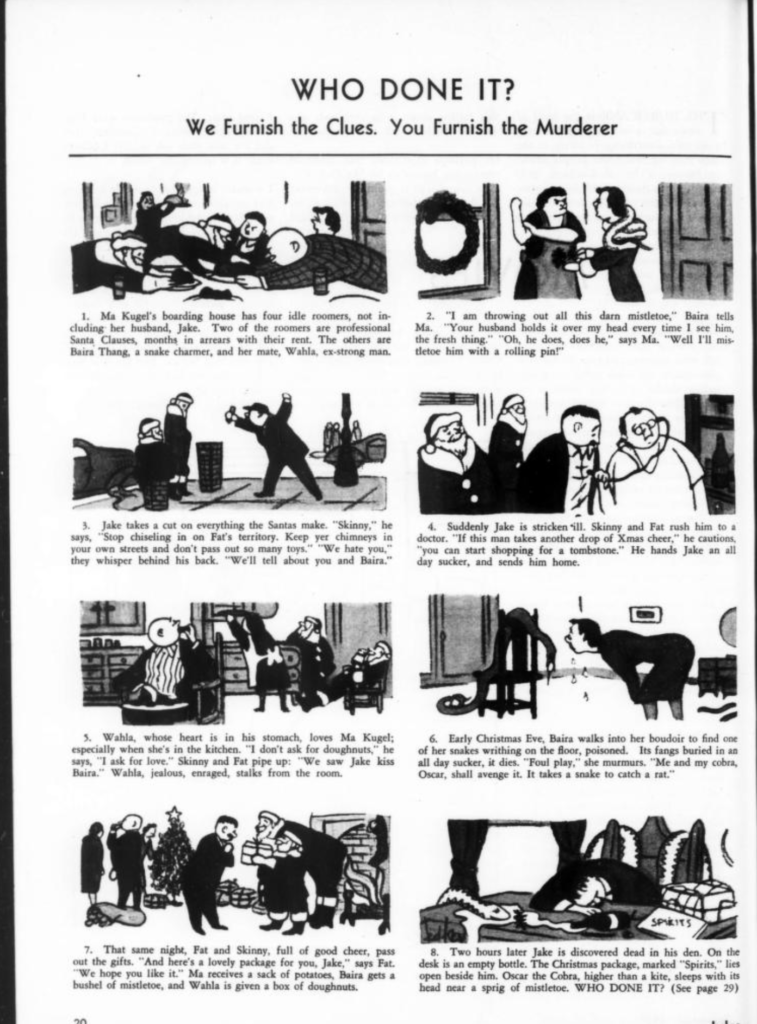
Today, the answer is revealed. “Christmas cheer” being a synonym for alcohol to which Jake was allergic.
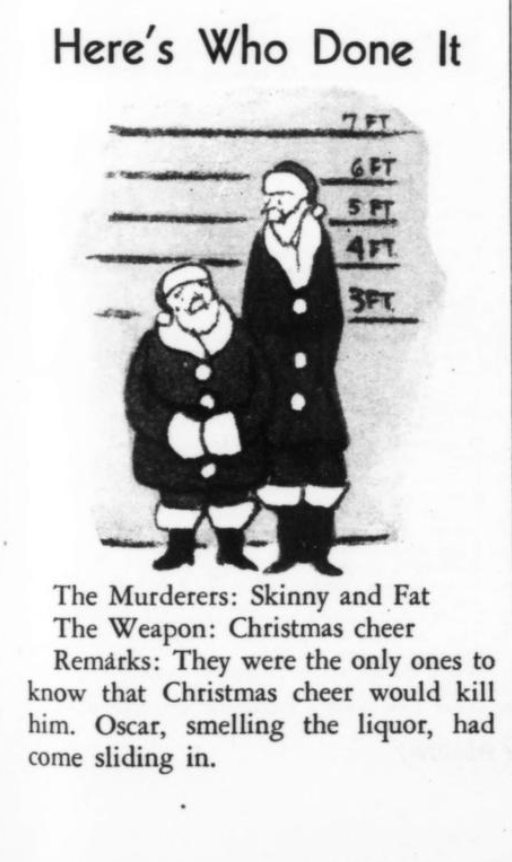
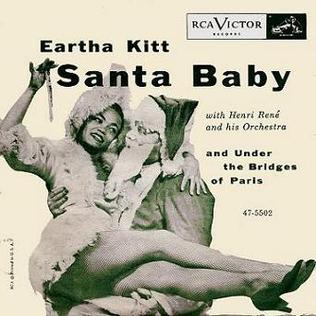
In this holiday tribute in song to the give-and-take of personal relationships, Santa Claus is urged to provide a yacht, furs, jewelry and other consumer durables to a young woman who assures him she could be good if only her needs were met. Written by Joan Javits, and Phil Springer, the song was a hit for Eartha Kitt in 1953 (still the best version) and was later recorded by Michael Bublé, Taylor Swift, Ariana Grande, and Madonna, the self-anointed Material Girl.
Santa baby, slip a sable under the tree, for me
I’ve been an awful good girl
Santa baby, and hurry down the chimney tonight
Santa baby, an out-of-space convertible too, light blue
I’ll wait up for you dear
Santa baby, and hurry down the chimney tonight
Think of all the fun I’ve missed
Think of all the fellas that I haven’t kissed
Next year I could be oh so good
if you’d check off my Christmas list
Boo doo bee doo
Santa honey, I wanna yacht and really that’s
Not a lot
I’ve been an angel all year
Santa baby, and hurry down the chimney tonight
Santa cutie, there’s one thing I really do need, the deed
To a platinum mine
Santa cutie, and hurry down the chimney tonight
Santa baby, I’m filling my stocking with a duplex, and checks
Sign your ‘X’ on the line
Santa baby, and hurry down the chimney tonight
Come and trim my Christmas tree
With some decorations bought at Tiffany’s
I really do believe in you
Let’s see if you believe in me
Boo doo bee doo
Santa baby, forgot to mention one little thing, a ring
I don’t mean a phone
Santa baby, and hurry down the chimney tonight
Hurry down the chimney tonight
Hurry down the chimney tonight
 In the old days, Norwegian householders would carry “Christmas hay”, or julehalm, into the house and spread it on the floor of the front room. On Christmas Eve the master and his servants would sleep there together, partly for mutual support on that night of the year when demonic forces outside were at their strongest and partly in remembrance of the baby Jesus and his bed in the hay-filled manger. The custom was also observed in Sweden in the belief that the beds should be left empty for the spirits of the family dead who had returned for the holiday. Food would be left on the table
In the old days, Norwegian householders would carry “Christmas hay”, or julehalm, into the house and spread it on the floor of the front room. On Christmas Eve the master and his servants would sleep there together, partly for mutual support on that night of the year when demonic forces outside were at their strongest and partly in remembrance of the baby Jesus and his bed in the hay-filled manger. The custom was also observed in Sweden in the belief that the beds should be left empty for the spirits of the family dead who had returned for the holiday. Food would be left on the table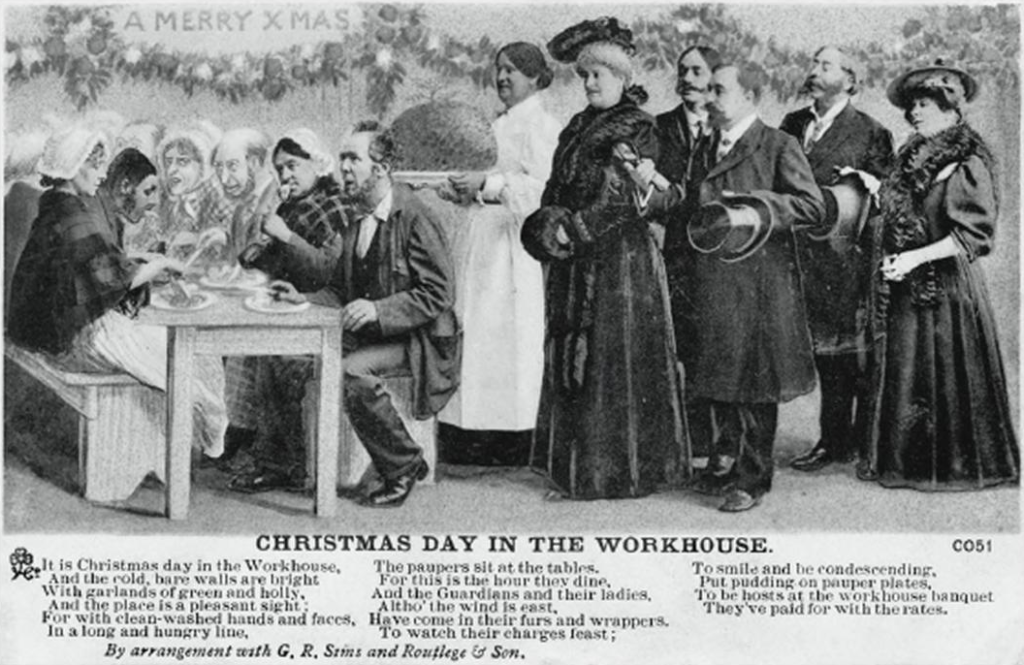
“In the Workhouse, Christmas Day” is a longish poem, much parodied, by George R. Sims (1847-1922), often referred to as “Christmas Day in the Workhouse”. A poor man in the midst of the Christmas feast brought by the wealthy to the parish workhouse angrily refuses to eat his pudding because of the memory of his wife who starved to death rather than go to there last year. The parish had refused him “relief” and told him the House was the only option. Its penultimate verse gives a sample of the bathos the poem invokes:
Yes there, in the land of plenty,
Lay a loving woman dead,
Cruelly starved and murdered
For a loaf of parish bread.
At yonder gate, last Christmas,
I craved for a human life.
You who would feast us paupers,
What of my murdered wife!

The piece of cod that passeth all understanding. In Norway and Norwegian-America lutefisk is the quintessential Christmas dish, prepared from cod soaked in lye and possessing a pungency of aroma that deters many outsiders from appreciating its delights.
A popular Norwegian-American song sung to the tune of “O Tannenbaum” has outlined the attractions of the dish:
Lutefisk, O Lutefisk, how fragrant your aroma,
Lutefisk, O Lutefisk, you put me in a coma.
You smell so strong, you look like glue,
You taste just like an overshoe,
But lutefisk, come Saturday,
I tink I eat you anyvay
Lutefisk, O lutefisk, I put you in the doorvay.
I wanted you to ripen up just like they do in Norvay.
A dog came by and sprinkled you.
I hit him with my overshoe.
O lutefisk, now I suppose
I’ll eat you while I hold my nose.
Here is a light-hearted set of instructions for making this delicacy:
1. Get the lutefisk.
2. Lay it on a pine board.
3. Flatten with a meat cleaver.
4. Salt and pepper it and pour on butter.
5. Bake on board in oven for 30 minutes.
6. Remove from oven and allow to cool.
7. Throw out the lutefisk and eat the board.
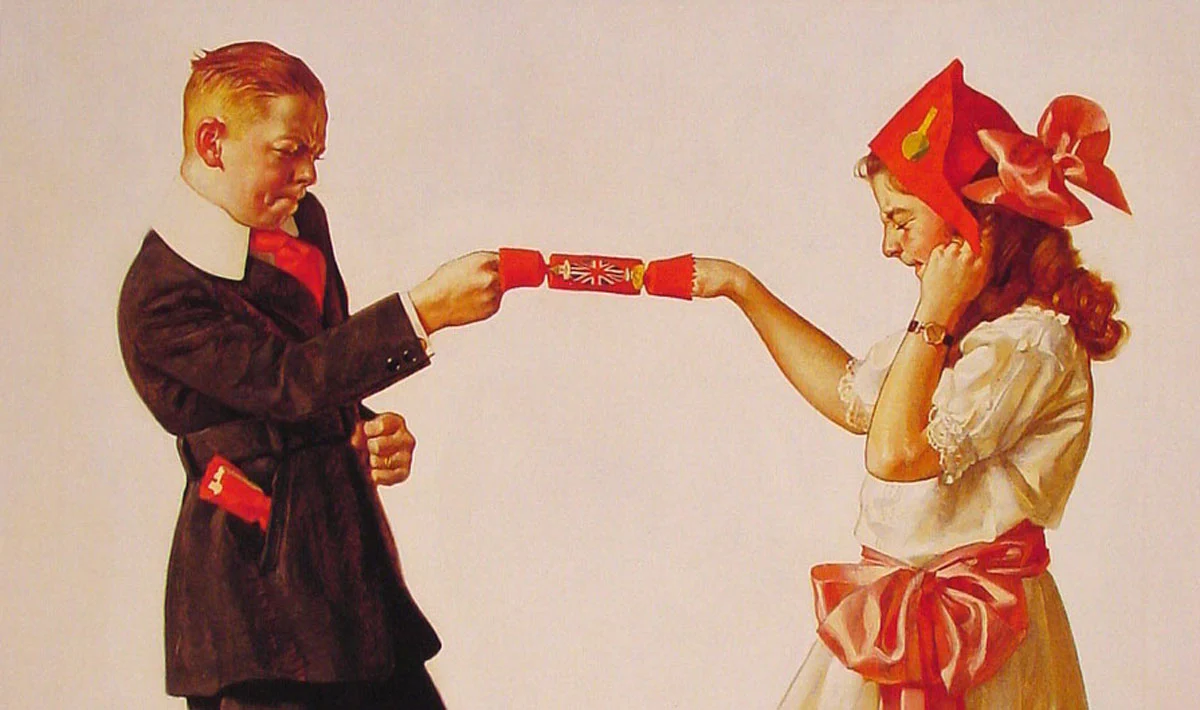
A Christmas novelty popular in Britain and countries of the Commonwealth. A Christmas cracker takes the form of a small cardboard tube covered in decorative wrap and containing a strip of chemically-impregnated paper which, when pulled, creates a miniature explosive snap. When opened the cracker reveals a paper hat, a motto or joke and a small prize.
The cracker was invented in 1847 by a London confectioner named Tom Smith. The idea began with the “bon bon”, a French candy in a twist of paper. To this Smith added a small motto and then conceived the idea of a noise when throwing a log on a crackling fire. After much experiment Smith came up with the right chemical formula and the cracker was born. He soon discarded the candy and began to call his invention “cosaques”, after the crack of the Cossack whip.
Since the 1840s the Christmas cracker has contained mottoes humorous, romantic, artistic and puzzling with prizes ranging from inexpensive plastic toys to decorated boxes to real musical instruments to expensive jewelry with special lines prepared annually for the Royal Family. It is now an indispensable part of Christmas dinner in millions of houses around the world.

“All I want is what I have coming to me. All I want is my fair share,” says Lucy in this little animated film on the dangers of a materialistic view of Christmas. Though there are some chuckles over Charlie Brown’s direction of the school pageant and his search for a suitable tree, A Charlie Brown Christmas (1965) is more of a morality play than a light-hearted romp.
CBS apparently had misgivings about the religious content of the show — one of the few explicitly Christian animated films about Christmas — but this Charles Schulz creation won an Emmy for Best Children’s Program and went on to become an enduring holiday favourite.
The score was written by Vince Guaraldi who boldly chose to do a jazz-flavoured set of compositions instead of the more juvenile music that usually accompanied children’s cartoons. The show was produced by Bill Melendez and Lee Mendelson who were to collaborate on further Charlie Brown specials. A sequel, less profound but more amusing, was the 1992 television special It’s Christmastime Again, Charlie Brown.
“Broncho Billy and the Baby” was a short Christmas allegory by Peter B. Kayne which appeared in The Saturday Evening Post in 1910 and which spawned seven motion pictures. The story is of three bandits who rob the bank at New Jerusalem and head out into the desert to escape. There they encounter a dying woman who extracts a promise from them that they will save her new-born baby. The outlaws battle thirst and the elements and finally one of them makes it back to New Jerusalem with the infant just in time for the Christmas Eve service.
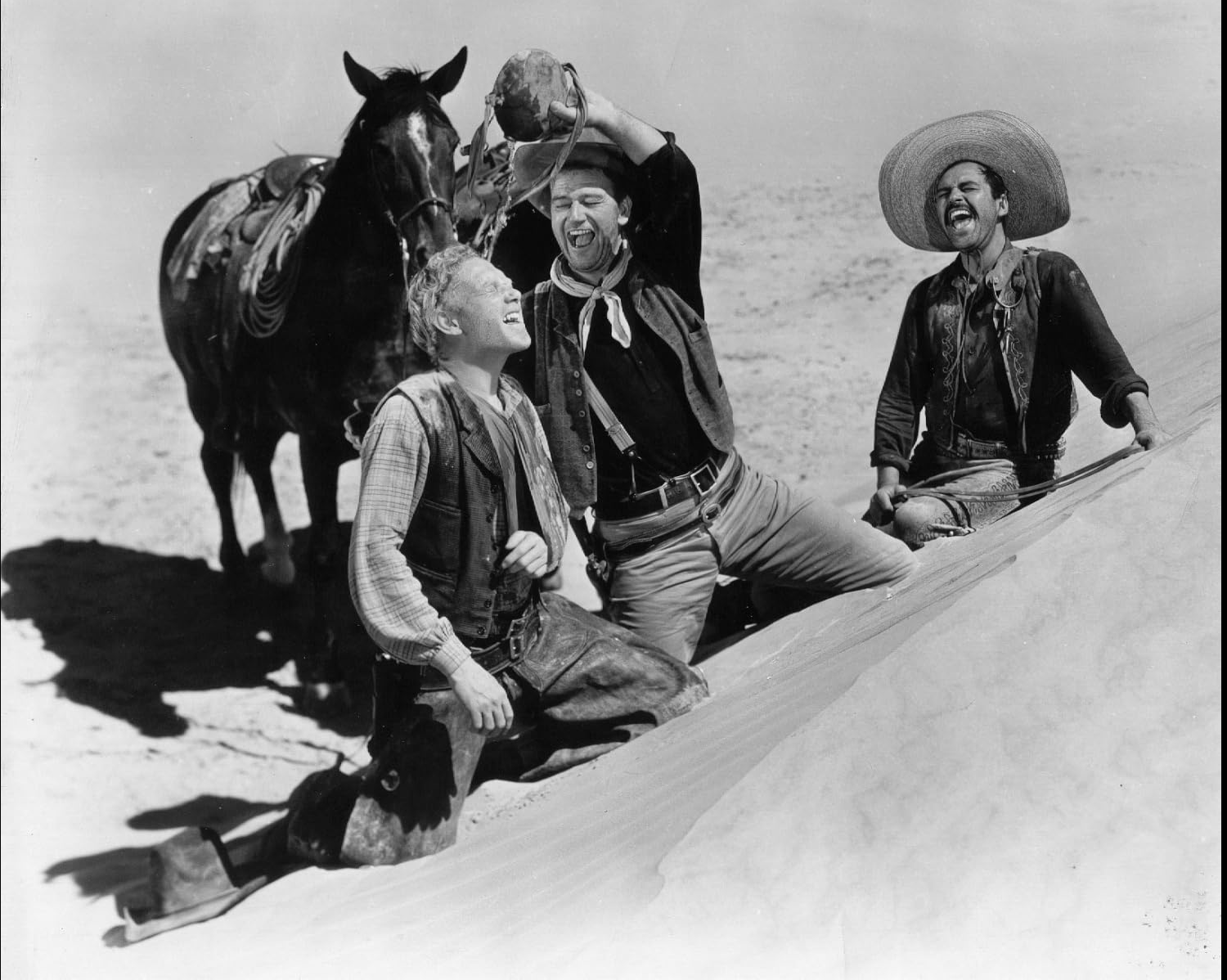
The first cinematic version appeared in 1911, a one-reeler called The Outlaw and the Child; it was followed by three more silent films in 1913, 1916 and 1919. The first sound version (and Universal Studio’s first outdoor talkie) was Hell’s Heroes in 1930, filmed by William Wyler in the Mojave Desert. Charles Bickford, Raymond Hatton, and Fred Kohler Sr play three genuinely hard men and the movie is uncompromising and harsh. Two more sentimental renditions both called Three Godfathers appeared in 1936 and, more memorably, in 1948. The latter was a John Ford western starring John Wayne, Harry Carey Jr. and Pedro Armendariz; it was the only one to dare a happy ending. In 1974 the made-for-television The Godchild moved the plot to three Civil War escapees played by Jack Palance, Jack Warden and Keith Carradine.

Tokyo Godfathers (2003) transfers the story to mean urban streets of contemporary Japan. The baby in this animated movie by director Satoshi Con is tended by three homeless people, a transgender woman, a young girl, and an alcoholic.
“And it came to pass as the angels were gone away from them into heaven, the shepherds said one to another, Let us now go even unto Bethlehem, and see this thing which has come to pass, which the Lord hath made known unto us. And they came with haste, and found Mary, and Joseph and the babe lying in a manger.” (Luke 2: 15-16)
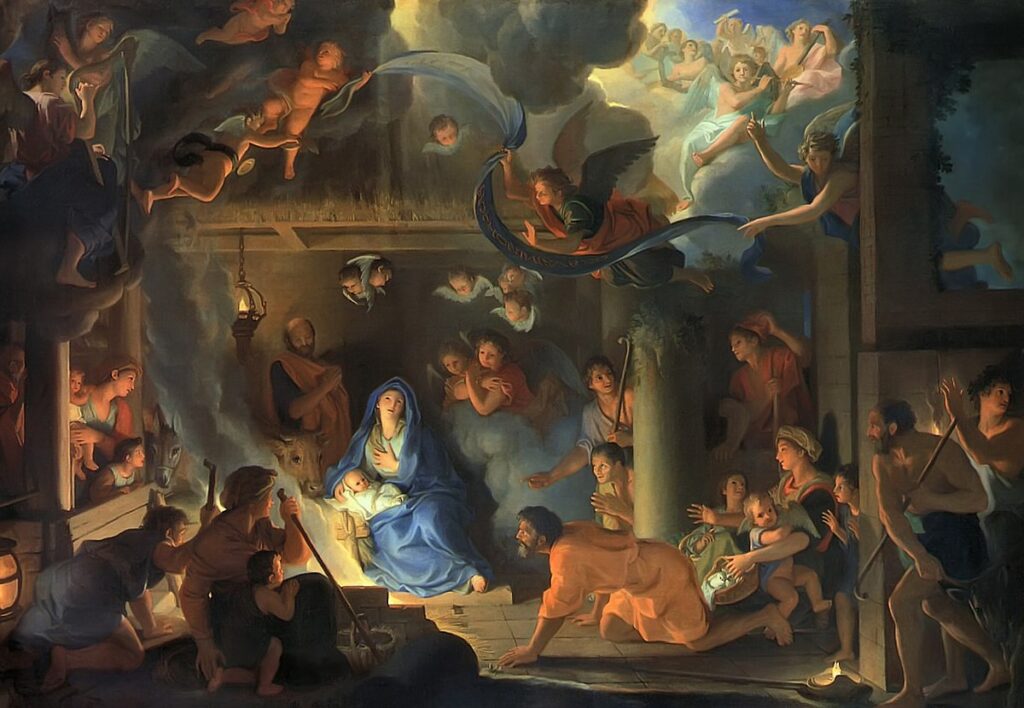
Lebrun, Adoration of the Shepherds
The artistic portrayal of the visit of the shepherds to the baby Jesus was at first depicted as a visitation by two or three shepherds with simple gifts such as a lamb. The number of shepherds increased in later medieval art and the scene was often conflated with the Annunciation to the Shepherds or the Adoration of the Magi. In Le Brun’s 1690 Adoration of the Shepherds the host of angels filling the air above the Virgin contrasts with the earth-bound shepherds who crawl toward the centre of the canvas. The piety and simplicity of the shepherds made the scene a favourite subject for centuries — other artists who have painted the scene include Rembrandt, Bassano and El Greco whose Adoration was his last work, meant to hang over his tomb.
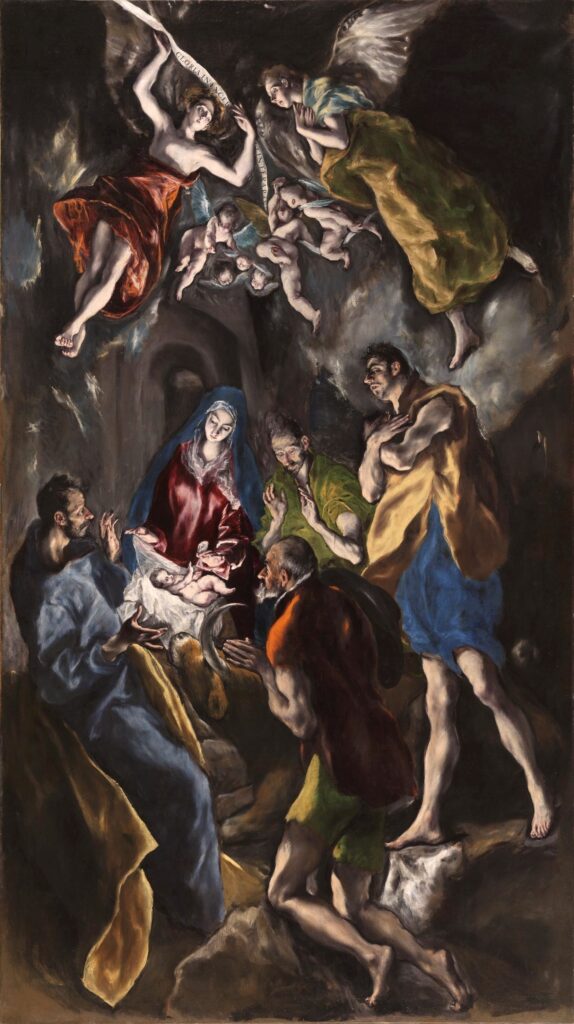
El Greco, Adoration of the Shepherds
The incident is also the subject of carols, movies and television specials.